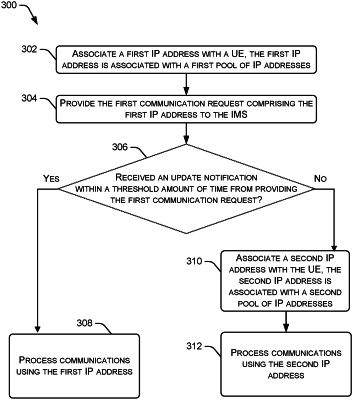| CPC H04L 61/5061 (2022.05) [H04L 65/1016 (2013.01); H04L 65/1045 (2022.05)] | 20 Claims |

|
1. A method performed by a one or more computing devices configured in a wireless communications network, the method comprising:
associating, by a first component of a core network associated with an Internet protocol (IP) multimedia system (IMS), a first IP address with a user equipment (UE), wherein the first IP address is associated with a first pool of IP addresses;
providing, by a second component of the core network, a first communications request comprising the first IP address associated with the UE to the IMS;
determining, by the second component of the core network and based at least in part on not receiving an update notification from the IMS within a threshold amount of time from providing the first communication request to the IMS, the first IP address is not represented in a set of IP addresses configured at the IMS;
based at least in part on determining that first IP address is not represented in the set of IP addresses configured at the IMS, associating a second IP address with the UE, wherein the second IP address is associated with a second pool of IP addresses different from the first pool of IP addresses; and
providing, by the second component of the core network, a second communication request comprising the second IP address associated with the UE to the IMS.
|